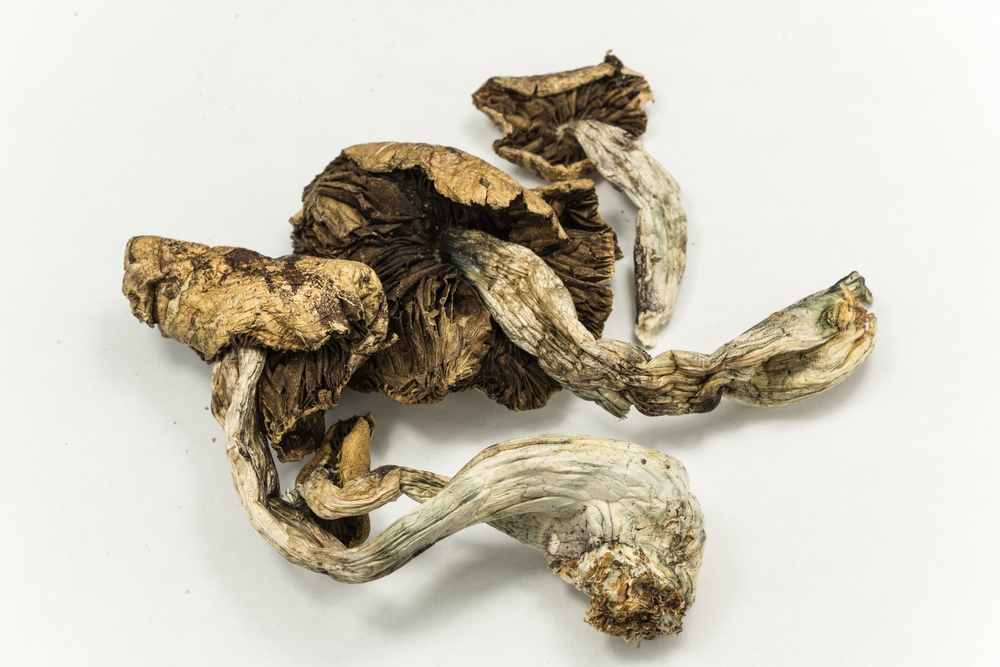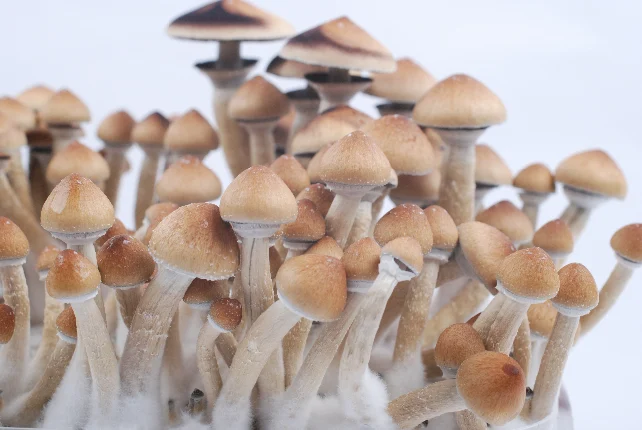News
Magic Mushrooms Dopamine: Understanding Their Neurochemical Effects
In the recent past though, magic shrooms have been lifted to the state of an actual prominent drug not only in the rave scene, the new trend to get high but also a possible cure. This substance [psilocybin] is notable for its positive effects which may help to stimulate profound psychological changes and spiritual experiences. But there is a rhetorical question that calls for explaining the scientific connections to all these effects. This has the consequence of proving the existing results, illustrated above, of how for example magic mushrooms act on the brain and the levels of dopamine we have inside our body. Let’s therefore go to the head and see what goes on, once the effects of psilocybin set in and see how all this affects or enhances the link between mushrooms and dopamine.
The Mystical Molecule: Psilocybin and Its Journey

There is no doubt that the peculiar effects of magic mushrooms are accounted for by its psychoactive ingredient called psilocybin. Shaped like a solid, round pellet and contained in over 180 species of mushrooms, psilocybin is a classic psychedelic hallucinogen used in spiritual and shamanic rituals. This compound has quite an interesting way of behaving within the body; it needs to be ingested. When ingested, the psilocybin is hydrolyzed largely in the acidic environment of the stomach to form the active metabolite, psilocin.
Once changed to psilocin, it crosses the blood-brain barrier, an important layer that prevents all foreign materials with toxic impacts on the brain from penetrating the organ, yet lets useful elements for its functioning pass through. This is quite a crucial step towards providing evidence that a molecule called psilocin has crossed the blood-brain barrier. Psilocin is an agonist and exerts its effects via interaction with the serotonin receptors especially the 5-HT2A receptors found in the dorsolateral prefrontal cortex. It is linked to mood, cognition, and perception and includes a variety of substructures that are responsible for different functions.
The effects stem from the fact that the interaction between psilocin and these receptor types interferes with the typical functioning of serotonin specifically in the processes that relate to the reception of sensory insights, profound self-reflection, and emotional revelations. This is the cascade that results in the highly-iconized psychedelic experience with features such as intense perceptive hallucinations of forms and geometric patterns, auditory, as well as the ‘connectedness’ feeling and the deep change in mood and cognition plans. By comprehending this trip through the digestive system to the brain, the mechanism of how magic mushrooms influence our awareness of reality strongly draws the veil of mystery.
Dopamine: The Brain’s Reward Maestro
Many would agree with the notion that dopamine stands as the kingpin of the quintessential “feel good” neurotransmitter, which swings the mood of the show within our brain. Arguably, it cannot be paralleled to its function as a key regulator of the brain reward system that affects motivation, pleasure, and affective response. To understand how magic mushrooms work and how they not only changed the way we think about art but also altered our perception of reality, it is crucial to dig deeper into the matter and examine the role of dopamine. Thus, let us follow the initial steps in the intricate neural maze of the brain and find dopamine at the helm of our instinctual self’s pleasure.
Psilocin and Serotonin: A Dance with the Receptors

The substance, once ingested, is metabolized by the body and is converted to psilocin – the known hallucinogenic substance. The details of how psilocin operates in or affects the brain are not yet fully understood but it is known that its primary action is on the serotonin receptors district 5-HT2A. This receptor is highly concentrated in areas of the brain linked to specific functions such as perception, cognition, and mood regulation.
It may be noted that each active ingredient present in magic mushrooms, particularly the psilocin, impacts the 5-HT2A receptor to generate an extensive neural response that essentially reorganizes the normal neuronal connectivity in the brain. This interaction between the receptors is extremely important for the hallucinogenic effects that one is likely to develop while on a magic mushroom trip. The effects are usually shown as mentioned by the users as vivid technicolor hallucinations of sights and sounds, the feeling and perception of oneness with the environment, and time distortions resulting in extreme feelings of otherworldliness and space-time continuum. These are not merely hallucinations but rather they affect the fundamental data input that an individual receives through his senses, thoughts, and emotions as well as his worldview.
It then binds with serotonin receptors before opening the door for other neurochemical alterations involving dopamine. Even though psilocin acts mostly on serotonin receptors, it is interaction with serotonin receptors indirectly affects dopamine receptors. Irrespective of their differences, serotonin and dopamine interact with each other in the intricate neural circuitry of the brain. The modulation of 5-HT2A receptors concerning psilocin can direct further changes in signaling cascades which can ultimately promote dopamine release in specific regions of the brain.
Several of the brain structures that respond prominently to this interaction are categorized within the reward circuitry, such as the striatum. The striatum is a very important area of the brain that is involved in issues to do with motivation, the perception of rewards, and the rewarding aspects of experiences. Psilocin affects serotonergic neurotransmission and it leads to the alterations of dopamine’s signals in the striatum. This modulation is instrumental in the feelings of euphoria and the fast and profound changes in the emotional and psychological states. as observed by users.
Furthermore, the effects of magic mushrooms on our brains may not be fully understood due to the interactions between proteins with psilocin and serotonin receptors in the process of altering dopamine levels. It is much more complex than a base-level reaction between two people, and its warfare of all the significant neurochemical actors. These changes can be used to explain why people may feel elated, and compassionate and have profound psychological shifts in the duration and after the psilocybin sessions.
These two and more concepts help explain how magic mushrooms work, and the roles played by psilocin, serotonin, and dopamine are crucial to identifying the therapeutic values of magic mushrooms. By understanding this interaction, researchers hope to gain new treatments for disorders associated with mental health thus tapping into the benefits of psilocybin while avoiding the side effect of the dysregulation of these neurochemical systems.
The Dopamine Connection: Indirect Influence
One can testify that psilocin interaction with s receptors leads to neural activity that is not purely associated with serotonin. Stern and Turner also emphasize that this interaction is followed by an increase in dopamine release in certain sections of the brain, including the striatum which is responsible for the processing of reward stimuli. Intriguingly, the effects of psilocin that act upon serotonin receptors can secondarily affect dopamine release, impacting on mood, motivation, and feelings. This complex interaction of neurotransmitter systems gets to the enhanced spiritual and physiological feeling and sensation that magic mushrooms with blue pigments produce. These neurochemicals provide a better understanding of psilocybin’s outcomes, and therefore it is crucial to continue investigation of its benefits or harm and corresponding consequences.
Neuroplasticity: Rewiring the Brain
One of the most exciting aspects of psilocybin research is its potential to promote neuroplasticity—the brain’s ability to form new connections and pathways. This has significant implications for treating mental health conditions like depression and anxiety, where dopamine dysregulation often plays a role. Magic mushrooms might help reset dysfunctional dopamine circuits, fostering long-term psychological resilience.
Therapeutic Potential: Beyond the Trip

Clinical studies have shown promising results for psilocybin-assisted therapy in treating various mental health disorders. Psilocybin, the active compound in magic mushrooms, works by modulating neurotransmitters, particularly serotonin, and dopamine, which play crucial roles in mood regulation and emotional processing. This modulation can lead to significant improvements in symptoms of depression, anxiety, PTSD, and even addiction.
For individuals with treatment-resistant depression, psilocybin has demonstrated the potential to break through the barriers where traditional treatments have failed. The compound’s effects on dopamine pathways are particularly relevant for conditions characterized by anhedonia, a reduced ability to experience pleasure. By enhancing dopamine signaling, psilocybin can restore a sense of joy and engagement with life, offering new hope for those who have struggled with conventional antidepressants.
Moreover, psilocybin’s impact extends beyond dopamine. It fosters neuroplasticity, the brain’s ability to reorganize and form new neural connections, which is vital for recovery from mental health conditions. This neuroplastic effect can help patients reframe negative thought patterns, leading to lasting psychological benefits. As research continues, the therapeutic potential of psilocybin-assisted therapy is becoming more apparent, paving the way for innovative treatments that harness the power of psychedelics to heal the mind.
Future Horizons: Research and Regulation
The growing body of research on magic mushrooms and dopamine heralds a new era in psychopharmacology. However, challenges remain in terms of regulation, safety, and ethical considerations. As we continue to unlock the secrets of psilocybin, it’s essential to navigate these complexities with care and scientific rigor.
The interplay between magic mushrooms and dopamine offers a glimpse into the profound neurochemical processes that underpin our consciousness. By enhancing our understanding of these mechanisms, we move closer to harnessing the therapeutic potential of psilocybin, transforming it from a mystical substance into a beacon of hope for mental health treatment. As research progresses, the enigmatic relationship between magic mushrooms and dopamine will undoubtedly continue to captivate scientists and laypeople alike.


